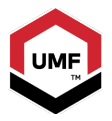August 27, 2019

Already have an account?
Sponsored Content
There’s a lot to consider when stocking your store with Manuka honey—brand story, quality, potency, floral source, sustainability and more.
Not all Manuka is created equal! Clever branding combined with trade and consumer confusion has unfortunately led to some lowgrade products finding their way into distribution. Several popular Manuka brands market self-created terms like “Factors,” “Bio-Active” or “Active.” These terms lack measurable, independent standards to ensure Manuka’s quality, purity, authenticity and value.
 Luckily, there’s a quality seal that can make your job a whole lot easier—the Unique Manuka Factor, known as UMF™.
Luckily, there’s a quality seal that can make your job a whole lot easier—the Unique Manuka Factor, known as UMF™.
The Unique Manuka Factor Honey Association (UMFHA) and the UMF™ grading system play a critical role in ensuring that Manuka honey is indeed the real deal, and exceeds New Zealand Government’s MPI recently defined characteristics for what can be labeled as “Monofloral Manuka Honey.” UMF™ certified Manuka contains the compounds that differentiate it from less expensive, less bioactive and easier to source honey. These key markers include:
MGO (Methylglyoxal)
The key compound chiefly responsible for the non-peroxide, or antibacterial property, of Manuka honey. MGO forms the basis of the UMF™ grading system.
Leptosperin
A naturally occurring phytochemical marker that is the most discerning characteristic of Manuka honey. It is used to verify Manuka’s authenticity and distinguish it from other types of honey.
DHA (Dihydroxyacetone)
Comes from the nectar of Manuka flowers that converts to methylglyoxal once the bees have gathered it and turned it into honey.
Lastly, like Champagne comes from France, Manuka honey should come from New Zealand, so also look for the New Zealand FernMark. Have more questions about quality Manuka? Download our guide, Manuka honey - nature's trusted folk medicine.
You May Also Like
.png?width=700&auto=webp&quality=80&disable=upscale)



